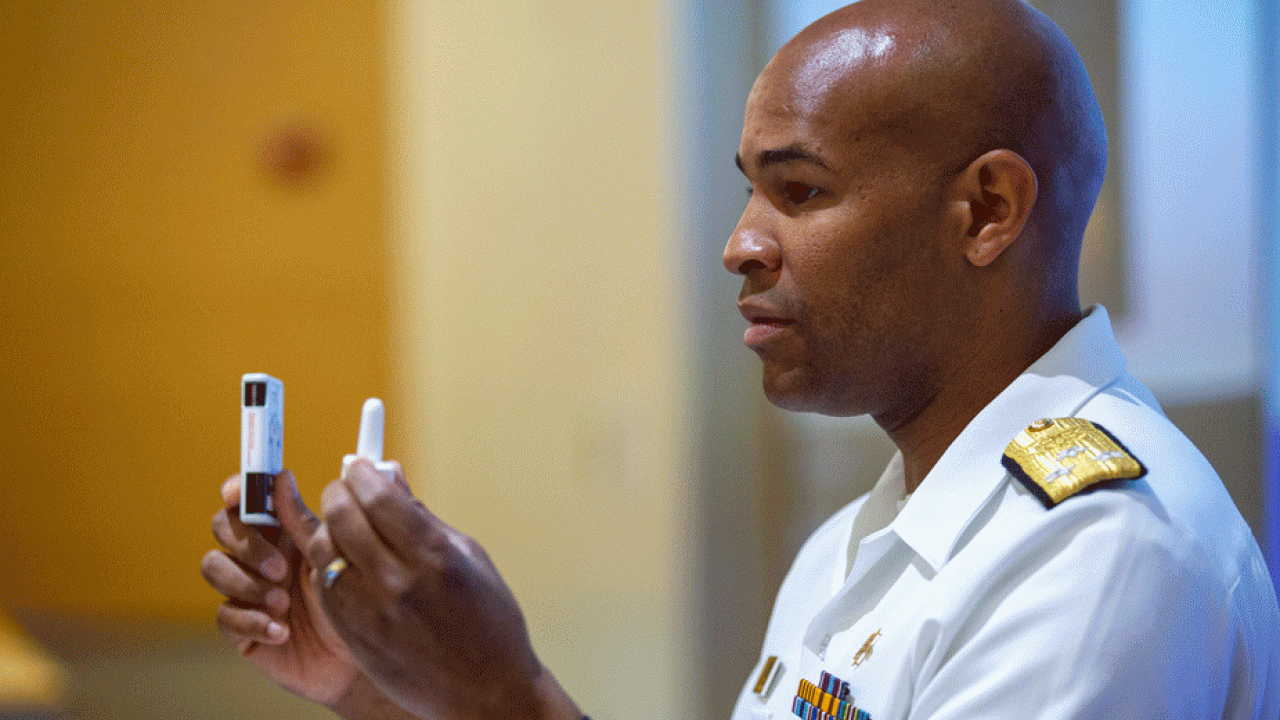Quick Summary
- Jerome Adams addresses “grand rounds” for faculty, staff and students at UC Davis Health
- On measles vaccine: A clinic visit doesn’t afford enough time to change the minds of parents who are misinformed
- On opioid epidemic: Medical personnel must “walk the talk” on medication-assisted treatment
Surgeon General Jerome Adams is on a mission. As the “nation’s health cheerleader,” he encourages everyone in the field — students, physicians, nurses, public health specialists and businesses — to get involved.
“We often fail to connect with our community,” Adams said June 24 at a special “grand rounds” for faculty, staff and students at UC Davis Health. “We get inside our walls and clinics. We see patients when they come to us. We don’t go to them.”
Adams also addressed the opioid epidemic and ways medical personnel can help, and drew on an example from his own family.
In talking about community connections, or lack thereof, Adams used the resurgence of measles as an example — with the number of cases tripling in the United States since 2018. The majority of Americans do get vaccinated. But clusters of unvaccinated people combined with travel to countries with large measles outbreaks have allowed the virus to spread.
Adams said he recognizes the challenges that primary care physicians have in reaching people who are misinformed about the safety of vaccines.
“Mom or dad may be skeptical about vaccines,” he said. “At a clinic visit, I have 30 seconds to convince parents that a vaccine won’t hurt them or their child, even though they read otherwise on the internet. A national vaccine campaign won’t appeal to those who don’t get vaccinated. They are not on Twitter. It is up to us to get to their community.”
Health and prosperity
Adams said he believes individuals and businesses advocating for health can have a tremendous impact and change the future. Improving individual health leads to stronger communities, more business opportunities, as well as the overall prosperity of the nation, he said.
He used the example of Amazon’s setting up headquarters in Crystal City, Virginia, an area surrounded by healthy communities.
“They are moving to communities where there is a workforce,” he said. “They want healthy, young and educated people. Healthy communities lead to a healthy bottom line.”
Amazon’s arguing for more healthy communities will have more of an impact than the surgeon general and physicians alone, in moving people to change.
Opioids and stigma
More than 2.1 million people in the United States use opioids, and every 11 minutes someone dies from an overdose. Improving these odds is about reducing stigma and providing medication-assisted treatment, or MAT.
For Adams and many others, there is a personal connection to addiction. His brother had a history of untreated anxiety and depression. He became addicted after going to a party and taking a pill, which then led to heroin use and stealing. He is now in prison. Incarceration costs more than treating depression or funding opioid diversion and prevention programs, Adams said.
“Stigma is the biggest issue,” he said. “Stigma keeps people in the shadows not getting treatment. We need to normalize addiction as a disease. It’s not that addicts come from a ‘bad’ family. My family raised a surgeon general of the U.S. and also raised my brother, who has an untreated substance use disorder.”
He emphasized that treating pain doesn’t mean patients have to endure more pain. There are multimodal treatments and other options that can produce better pain control.
Treating addiction
Knowing cardiopulmonary resuscitation, carrying naloxone and having syringe programs in communities can also help address addiction.
“We need you all to walk the talk and be prepared to respond to cases of withdrawal,” he said. “Every medical student who is graduating should know how to recognize and treat addiction. They should be prepared to prescribe MAT and carry naloxone. This needs to be standard of care like high blood pressure.”
Treating opioid use disorder offers the chance for a brief intervention and referral to treatment. Adams urged his audience to lean into prevention while prescribing less.
“The opioid epidemic is a tremendous tragedy but it’s also an opportunity,” he said. “We’ve been here before. If we use it to show how we can be better partners, we can achieve their goals and ours.”
Media Resources
Carole Gan, 916-734-9047, cfgan@ucdavis.edu
